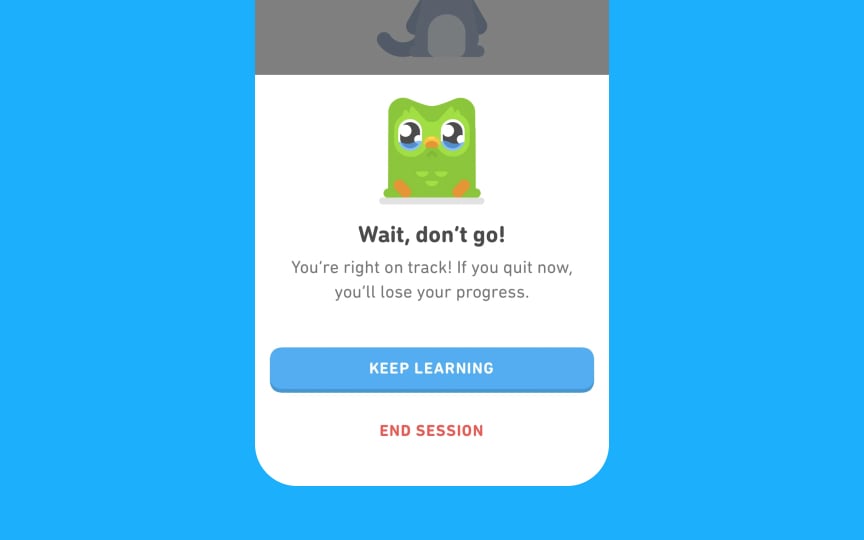Understanding user dormancy and its impact
Users dormancy occurs when previously active users stop engaging with a product or service for an extended period. This inactivity can significantly impact business metrics and overall success.
Key aspects of users dormancy include:
- Definition: Establish clear criteria for when users are considered dormant
- Timeframes: Identify typical periods of inactivity across user segments
- Impact on metrics: Understand how dormancy affects KPIs like MAU and revenue
- Churn risk: Recognize the correlation between dormancy and potential churn
- Lifetime value: Assess how reactivation influences users lifetime value.[1]
For example, Duolingo actively monitors user engagement, identifying potential dormancy at the moment users try to end their learning session mid-exercise. Their proactive approach helps prevent users from becoming inactive and losing progress, rather than waiting for extended periods of absence.
Pro Tip: Regularly analyze users activity data to identify early signs of disengagement before full dormancy occurs.

